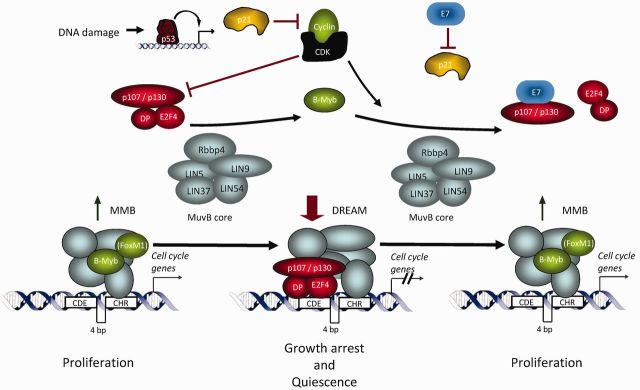Figure 7.

p53 controls transcriptional repression of target genes by an indirect mechanism through CDE and CHR elements. High levels of p53 lead to transcriptional activation of its target p21WAF1/CIP1. Inhibition of cyclin/CDK complex activity by p21WAF1/CIP1 leads to hypophosphorylation of p130. Hypophosphorylated p130, together with E2F4/DP1, can then form a repressive complex with the MuvB core replacing B-Myb in the MMB complex. MMB only requires the CHR element. The complex of p107/p130 and E2F4/DP1 with the MuvB core is named DREAM. DREAM requires both elements, the CDE and the CHR, for binding and repression. This resembles the protein complex binding to promoters during quiescence. Expression of the viral oncoprotein HPV E7 impairs p21WAF1/CIP1 function and blocks the pocket proteins p107/p130. Disruption of the DREAM complex then leads to derepression of cell cycle genes.
